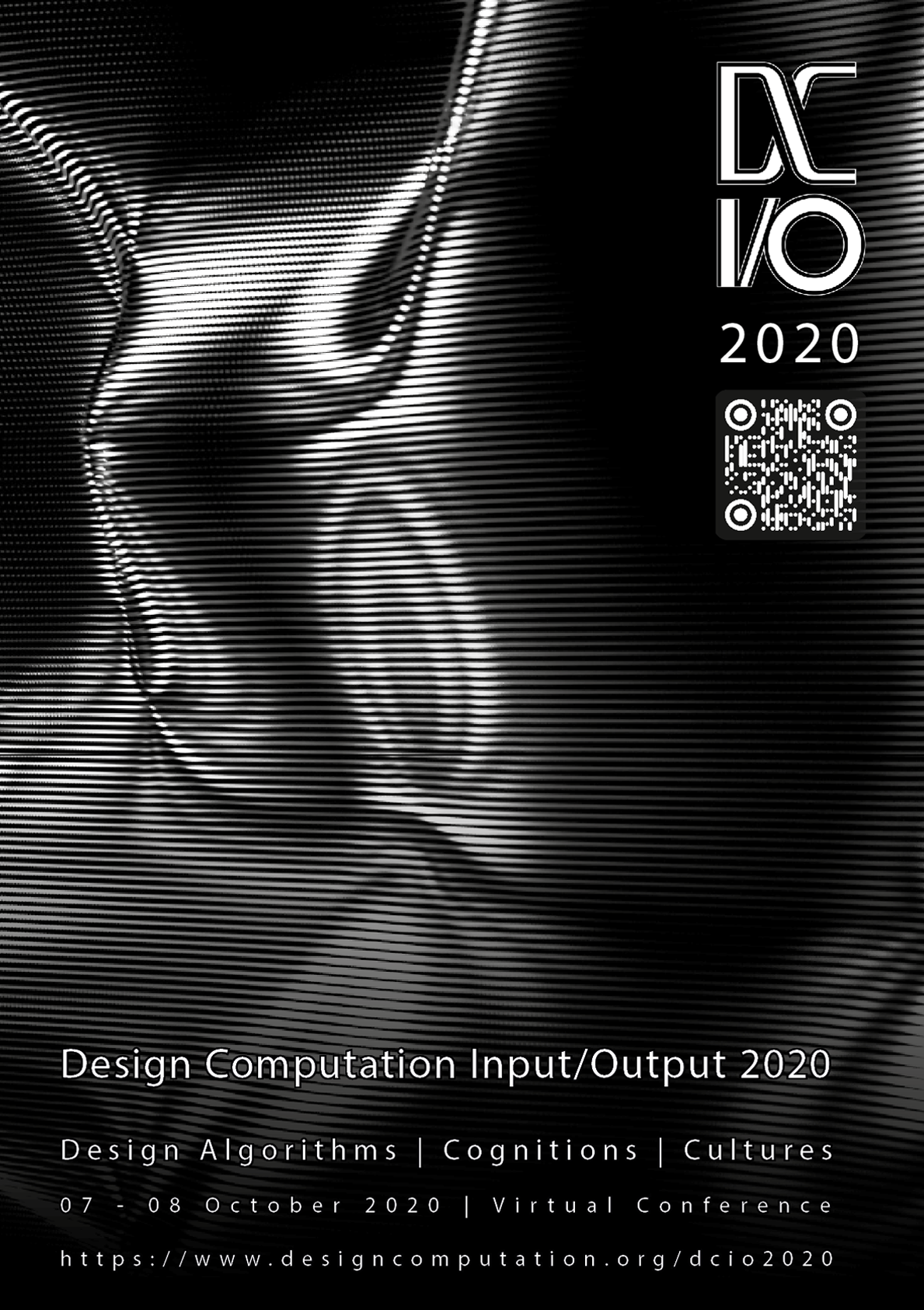DC I/O 2020
Design Computation Input/Output 2021 Conference (DC I/O 2020). DOI: https://doi.org/10.47330/DCIO.2020.QPRF9890
Design Computation Input/Output Conference, or simply DC I/O, was established with the premise that computational design methods should benefit from the scientific method and whenever possible, be cross-referenced in the many disciplines of design to evolve and diversify the field.
The way DC I/O is organised aims to assist in the understanding of the physical and digital relationships of producing design. It focuses on the many channels to capture the data necessary to inform design, the processes – natural and/or digital – of articulating this data input to accomplishing design, and outcomes of these processes as artifacts and references of study in the domain of computational design.
Conference papers are peer-reviewed and include the classic structure of a literature review, hypothesis, methodology, and conclusion but they give particular emphasis to the structured statement of the computational method used and how this method represents a progression in the field of research. Conference proceedings are ISBN published in an annual volume.
See the opening note by Dr. Abel Maciel HERE
Contents
Conference Keynotes
- Monsters, Moonshine and Black Sheep
- Opening the black box of design computation
- Representation in Transition
- Operationalising Architecture’s Core Competency: Agent-based Parametric Semiology
- Designing from/with/by Data: Revisiting the ablative framework for Design Computation
- Dy by Dx: The thinking beyond convention
- Learning to be Creative via Reinforcement Learning
Proceedings
Algorithms
- Supporting collaborative design and project management for AEC using Speckle’s interactive data flow diagram
- An Introspective Approach to Apartment Design
- Form-Finding Algorithm via Style Transfer
- Additive Manufacturing with Solid Wood: Continuous robotic laying of multiple wicker filaments through micro lamination
Cognitions
- Validating an emotional feedback tool for architecture: investigating the conditioning imparted by instructed emotional assessment in a virtual environment
- Supporting Design Decision Making Through Using ParaSIM Framework: Using parametric design approach for improved building energy modelling
- Augmenting the Vernacular: The emotional impact of cognitive affordance in the built environment
- Human Cognitive Shifting in AR and Computer-Assisted Material Crafting for Design and Making
Cultures
- Disrupting The Information Economy of Architecture With Satoshi’s Vision: How can blockchain applications in BIM help to support a circular economy inclusive to local independent and small-scale actors?
- Assessing the role of virtual reality as a psychological design tool within current architectural practice
- AR BIM Validation: The Prospective of Novel Applications in Site Management
- Visuospatial Cities: Interdependencies between Visual Perception and Urban Environment
- The waving timeline of AI: Foundations of the Algorithmic Archetype in Architecture
Posters
- Voxel Printing of Neuroimaging
- Current: A Platform for Urban Archive
- Additive Manufacturing with Solid Wood
- Exploring Interaction with Installations: Intended Experience vs Actual Experience
- Three-dimensional Visual Attention Heatmap in Space: Measuring and Modelling Navigational Behaviours in Built Environment
- D-Star: System Feature for Interacting with Alternatives
- Exploring alternative rules of distribution of POI in location-based games based on spatial configuration and visibility
- Cognitive Agent-Based Life Process Modelling to Predict Social Performance in Workplace Design
- Virtual Experiential Museum on Ajanta caves (VEMA): An Interactive Rediscovery of an Archaeological Site in India through Embodiment of Digital Heritage
